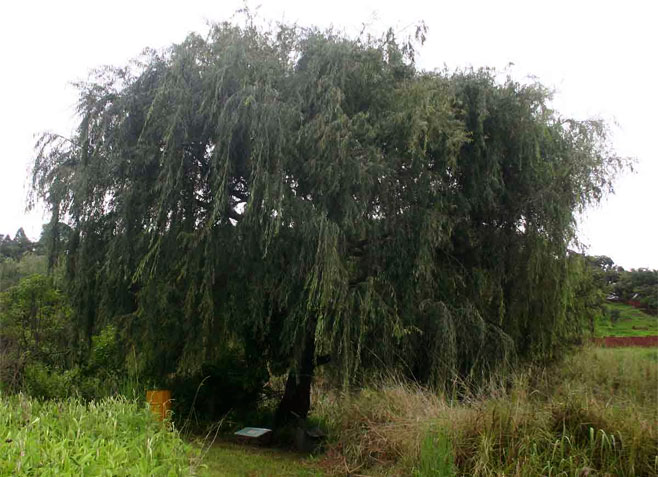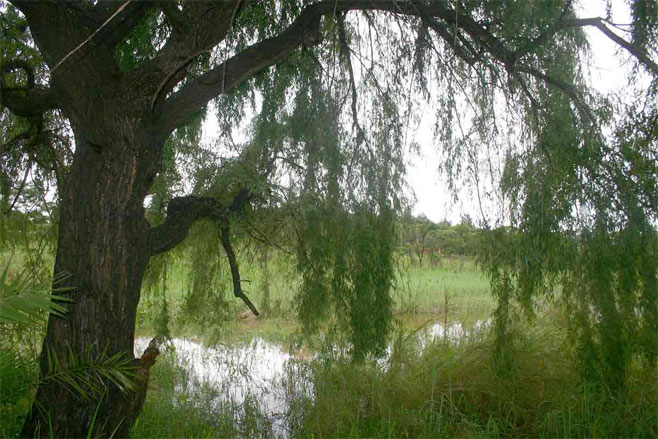Salix babylonica (Weeping
willow)
Life
> eukaryotes >
Archaeoplastida >
Chloroplastida
>
Charophyta > Streptophytina > Plantae (land plants)
> Tracheophyta (vascular plants) > Euphyllophyta > Lignophyta (woody plants)
> Spermatophyta (seed plants) > Angiospermae (flowering
plants) > Eudicotyledons > Core Eudicots > Rosids >
Eurosid I > Order: Malpighiales
> Family:
Salicaceae > Genus: Salix
 |
 |
|
Salix babylonica, Greystone Park Nature
Reserve, Zimbabwe. [photos Bart Wursten ©, Flora of Zimbabwe] |
Identification
Distinctive, well known tree growing to about
10 m tall, with branches drooping down vertically and reaching the
ground.
Distribution and habitat
Origin uncertain but thought to be native to
central and southern China. Introduced to Europe and from there it
was introduced to southern Africa where it is planted extensively
along rivers and around dams. Since at least the 1820s it has become
naturalised and is classified as a
declared Category 2 invasive
plant in South Africa. It has become particularly invasive along rivers
in the Grassland Biome and in some places has formed pure stands
along river banks. There are evidently only female plants in
southern Africa except for a male plant at the University of the
Free State in Bloemfontein (Jordaan 2005). Spreads by branches
breaking off and taking root.
Salix babylonica var. pekinensis
(Peking willow) is cultivated in the region.
Links
References
- Jordaan, M. 2005. FSA contributions 18: Salicaceae s.
str. Bothalia 35(1): 7-20.
Text by Hamish Robertson |
